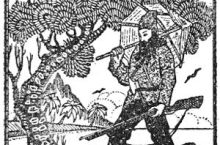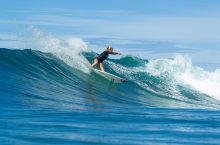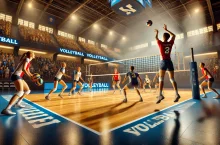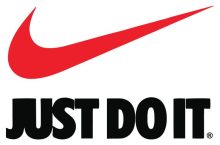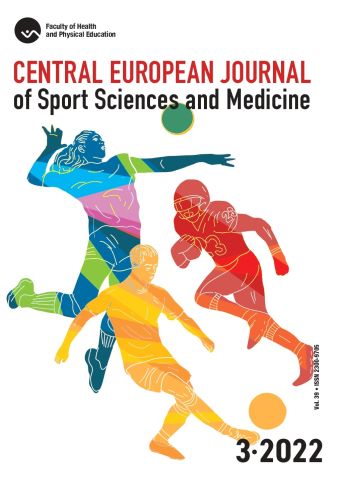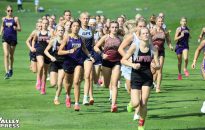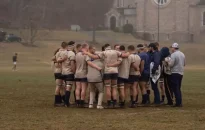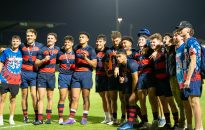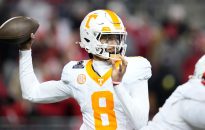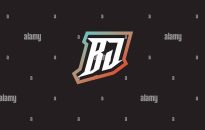Abstract Chmura, J. & Nazar, K. Parallel changes in the onset of blood lactate accumulation (OBLA) and threshold of psychomotor performance deterioration during incremental exercise after training in athletes. Int. J. Psychophysiol. 75 (3), 287–290. https://doi.org/10.1016/j.ijpsycho.2009.12.011 (2010). Introduction Stanković, M., Ruiz-Llamas, G. & Quiroga-Escudero, M. E. Effects of tested rules on work-rest time in volleyball. […]
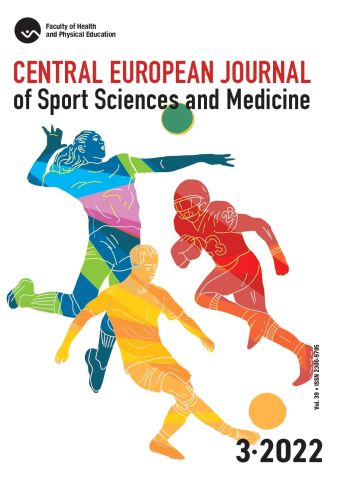
Abstract
Introduction
CAS
PubMed
PubMed Central
Google Scholar
Basic descriptive statistics (mean, SD, and range) were calculated for each parameter. The normality of data distribution was checked with the Shapiro-Wilk test. All parameters had normal distribution, and the Student’s t-test for dependent samples was used to assess the significance of differences between the arithmetic means of the examined parameters before and after the sports camp. The results were processed in the Statistica v.13. program at a significance level of α = 0.05.
Time analysis of top men and young male volleyball players
ADS
MATH
Google Scholar
You can also search for this author in
PubMed Google ScholarGibson, A. L., Holmes, J. C., Desautels, R. L., Edmonds, L. B. & Nuudi, L. Ability of new octapolar bioimpedance spectroscopy analyzers top redict 4-componentmodel percentage body fat in hispanic, black, and white adults. Am. J. Clin. Nutr. 87 (2), 332–338. https://doi.org/10.1093/ajcn/87.2.332 (2008).
Materials and methods
Statement
Marques, M. et al. The effects of an in-season resistance program on starters and nonstarters in elite male volleyball players. Open Sports Sci. J. 3, 90–91. https://doi.org/10.2174/1875399X010030100090 (2010).
Participants
- Open Access This article is licensed under a Creative Commons Attribution-NonCommercial-NoDerivatives 4.0 International License, which permits any non-commercial use, sharing, distribution and reproduction in any medium or format, as long as you give appropriate credit to the original author(s) and the source, provide a link to the Creative Commons licence, and indicate if you modified the licensed material. You do not have permission under this licence to share adapted material derived from this article or parts of it. The images or other third party material in this article are included in the article’s Creative Commons licence, unless indicated otherwise in a credit line to the material. If material is not included in the article’s Creative Commons licence and your intended use is not permitted by statutory regulation or exceeds the permitted use, you will need to obtain permission directly from the copyright holder. To view a copy of this licence, visit http://creativecommons.org/licenses/by-nc-nd/4.0/.
- The current study was examined volleyball players were subjected to three times the normal physical load during the week-long sports camp; therefore, it can be assumed that the absence of significant differences in test results is a good predictor of training effectiveness. Perhaps, an excessive training load imposed during a relatively short period of time (one week) led to fatigue, and supercompensation could not be fully achieved before the second trial due to a short regeneration period (3 days)76. However, far-reaching conclusions cannot be formulated at this stage. It appears that week-long training camps could deliver various benefits by promoting team-building and enabling the participants to improve their technical and tactical skills and master various playing strategies (by experimenting with different tactical actions) within a short period of time. During these events, coaches can assess the participants’ progress, performance, motivation, and involvement. Educational and personal growth activities (theoretical courses, workshops, meetings with sports counsellors) during sports camps can help volleyball players prepare both physically and mentally for the season.
- Days 2 and 5, when the first training session focused on strength and power development. The participants focused on strength in core areas of explosive resistance, jumping and plyometrics, efficient power development, and learned correct motor patterns,
Daria Grodź
Ethics statement
Smith, D. J., Roberts, D. & Watson, B. Physical, physiological and performance differences between Canadian national team and universiade volleyball players. J. Sports Sci. 10 (2), 131–138. https://doi.org/10.1080/02640419208729915 (1992).
Procedures
Stage 2 (Green E): the participant had to respond to the letter “E” displayed in green color. The remaining semaphores displayed other symbols in green color.Article
CAS
PubMed
PubMed Central
MATH
Google Scholar
Measurements of anthropometric characteristics
Zhao, K., Siener, M., Zhao, Y. & Hohmann, A. Physical fitness and motor competence performance characteristics of Chinese elite youth athletes from four track and field throwing disciplines—a crosssectional study. Front. Physiol. 14, 1267804. https://doi.org/10.3389/fphys.2023.1267804 (2023).
Assessment of motor characteristics
Test 1: reaction time test
Hank, M. et al. Differences in external load among indoor and beach volleyball players during elite matches. PeerJ 2 12 https://doi.org/10.7717/peerj.16736 (2024). Article
Google Scholar
CAS
PubMed
Google Scholar
Published: Download referencesOn day 3, when the first training session focused mainly on speed and agility. During this session, the participants worked on improving the techniques associated with linear acceleration, maximum velocity, lateral movement, multi-directional movement and agility,
Test 2: grip strength
Alacid, F., Vaquero-Cristóbal, R., Sánchez-Pato, A., Muyor, J. M. & López-Miñarro, P. Habit based consumptions in the medi-terranean diet and the relationship with anthropometric parameters in young female kayakers. Nutr. Hosp. 29, 121–127. https://doi.org/10.3305/nh.2014.29.1.6995 (2014).
Test 3: 5 × 20 s interval motor test on a Concept 2 rowing ergometer
Trajković, N., Milanović, Z., Sporis, G., Milić, V. & Stanković, R. The effects of 6 weeks of preseason skill-based conditioning on physical performance in male volleyball players. J. Strength. Cond. Res. 26 (6), 1475–1480. https://doi.org/10.1519/JSC.0b013e318231a704 (2012).Astolpho Lopes, J., Alves da silva, K. & Reeberg Stanganelli, L. C. Periodization of volleyball training characterization of training loads distribution in different macrocycles of Brazilian national U-19 male players. Hum. Mov. 22 (1), 33–41. (2021).
Test 4: Vertical jump
Test 5: Approach jump
Jaafar, H. et al. Effects of load on Wingate test performances and reliability. J. Strength. Cond. Res. 28 (12), 3462–3468. https://doi.org/10.1519/JSC.0000000000000575 (2014).
Test 6: standing long jump
Stone, M. H. et al. Power and maximum strength relationships during performance of dynamic and static weighted jumps. J. Strength. Cond. Res. 17, 140–147. (2003).
Statistical analysis
Results
Analysis 1. Changes in anthropometric characteristics
Article
CAS
PubMed
Google Scholar
Analysis 2. Changes in motor performance characteristics
Anthropometric measurements were performed before motor tests on day 1, and the athletes participated in motor tests on days 1 and 2. The participants were asked not to engage in any strenuous training on the day before the trial. On day 1, the athletes participated in a four-stage reaction time test, a grip strength dynamometer test, and a 5 × 20 s interval motor test on a rowing ergometer directly after anthropometric measurements. On day 2, the subjects participated in VJ, approach jump, and standing long jump motor tests.
Article
CAS
PubMed
MATH
Google Scholar
Sheppard, J. M., Chapman, D. W., Gough, C., McGuigan, M. R. & Newton, R. U. Twelve-month training-induced changes in elite international volleyball players. J. Strength. Cond. Res. 23 (7), 2096–2101. https://doi.org/10.1519/JSC.0b013e3181b86d98 (2009).
On the last day of the camp, the second training session involved a sparring match with a second league volleyball team.
Discussion
Google Scholar
Changes in anthropometric characteristics
Changes in motor characteristics: practical implications and critical approaches
Similarly to other sports, performance in volleyball is determined by multidisciplinary work, specialized training, and effective planning of training activities at the beginning of the season34. Therefore, diversified strategies and stimuli should be planned for each training stage to enable athletes achieve the desired outcome within a pre-established time35. This process should be divided into several stages which constitute the macrocycles of periodization. Week-long (such as the IMG Academy36 and Volleyball Development Camps37) or even three-day-long (Spire Academy38) sports camps are highly popular, in particular online, and many young volleyball players participate in these events. Based on current evidence, further research is needed to determine whether such short training events make a valuable contribution to the performance of 18-year-old volleyball players. Therefore, the aim of this study was to examine the potential short-term effects of a week-long training camp on the anthropometric and motor characteristics of young adult volleyball players. It was assumed that one week is not a sufficiently long period of time to induce changes in the anthropometric and motor characteristics of 18-year-old volleyball players participating in a sports camp.Pisa, M. F., Zecchin, A. M., Gomes, L. G. & Puggina, E. F. External load in male professional volleyball: a systematic review. Balt J. Health Phys. Act. 14 (2), 7. https://doi.org/10.29359/BJHPA.14.2.07 (2022).Article
MATH
Google Scholar
Gualdi-Russo, E. & Zaccagni, L. Somatotype, role and performance in elite volleyball players. J. Sports Med. Phys. Fit. 41, 256–262. https://doi.org/10.1136/bjsm.2005.021998 (2001).Article
Google Scholar
Alfoldi, Z., Borysławski, K., Ihasz, F., Soos, I. & Podstawski, R. S. Differences in the anthropometric and physiological profiles of Hungarian male rowers of various age categories, rankings and career lengths: selection problems. Front. Physiol. 12, e747781. https://doi.org/10.3389/fphys.2021.747781 (2021).
Strengths and limitations
Conclusion
Data availability
References
- Article
CAS
PubMed
Google Scholar
Kountouris, P. Time characteristics of volleyball matches in two consecutive olympic competitions after the implementation of the new regulations. Coach Volleyb. 22, 18–22 (2005). - Article
PubMed
PubMed Central
Google Scholar
DOI: https://doi.org/10.1038/s41598-025-85441-0 - The study involved 13 male volleyball right-handed players of the AZS UWM Olsztyn club, aged 17.98 ± 0.51 years (17.6–18.6), who competed in the tournaments of the third national league of the Warmia and Mazury Volleyball Union. The targeted sampling procedure relied on the following inclusion criteria: volleyball players held a valid competition license and had participated in national third league competitions for at least 1 year. All players had valid medical certificates. They trained regularly, and their physical activity levels were not limited (for whatever reason) to the extent that could significantly affect their motor fitness. During a four-week period preceding the first trial, the participants were allowed to miss one training session per week, and none of the participants had been dismissed from training due to illness or injury for more than one week in the previous two months. During the macrocycles, the players trained 12–13 h per week on average. During the volleyball camp, the participants focused on explosive strength training, jumping and plyometrics, efficient power development, and learned correct motor patterns. Total training time during the week-long sports camp was 35 h, and similar amounts of time were dedicated to each training attribute. The participants trained twice daily. The first training session took place between 10 a.m. and 12:30 p.m., and the second training session took place between 5 p.m. and 7:30 p.m. The above training schedule was modified on the following camp days:The physical conditioning sub-variables per one training session were as follows: training with weights – 59.9%, power jumps – 6.9%, anaerobic power – 11.3%, flexibility − 9.9%, coordination – 1.9%, postural work – 3.8%, recovery activities − 2.2%, proprioception – 0.5%, aerobic power – 3.6%. The mean dry bulb temperature in daytime was 22.8 ± 2.4 °C during the camp.
- Hedrick, A. Training for high level performance in women’s collegiate volleyball: part I training requirements. Strength. Cond. J. 29, 50–53 (2007).Article
CAS
Google Scholar - Springer Nature remains neutral with regard to jurisdictional claims in published maps and institutional affiliations.Stage 1 (Green): the participant had to respond to a semaphore displaying green light. Only one semaphore was activated at a time.
- Newton, R. U., Rogers, R. A., Volek, J. S., Hakkinen, K. & Kraemer, W. J. Four weeks of optimal load ballistic resistance training at the end of season attenuates declining jump performance of women volleyball players. J. Strength. Cond. Res. 20, 955–961 (2006).Article
CAS
MATH
Google Scholar - Spire academy. https://www.spireacademy.com/camps/volleyball/ (2024). MATH
Google Scholar - The research methodology used in this study has been applied in previous studies investigating the effect of thermal stress on the physiological characteristics of young adults, conducted by the authors, whose results have already been published (references − 39,40,41). According to the reviewers, the adopted methods are reliable and the obtained results are objective. Therefore, the research methodology and the presentation of results in this study are similar to those in previous articles by the authors who assume full responsibility for the content and structure of this manuscript.CAS
MATH
Google Scholar - Article
PubMed
Google Scholar - In the group of the examined anthropometric characteristics, a significant decrease was observed in body fat mass (BFM 1.0 kg, p = 0.015), percent body fat (PBF − 1.16%, p = 0.008), and the waist-to-hip ratio (WHR − 0.02, p = 0.001), whereas a significant increase was noted in total body water (TBW + 1.0 L, p = 0.002), proteins (+ 0.33 kg, p = 0.001), minerals (+ 0.12 kg, p = 0.003), fat-free mass (FFM + 1.46 kg, p = 0.001), and skeletal muscle mass (SMM + 0.9 kg, p = 0.001). No significant changes were found in body mass, BMI, or VFL (Table 1).This study aimed to examine potential changes in the anthropometric and motor characteristics of volleyball players aged 17.98 ± 0.51 years after participation in a week-long sports camp. Potential changes in anthropometric characteristics were determined by bioelectrical impedance, and the players’ motor characteristics were assessed in a reaction time test, grip strength test, 5 × 20 s interval test on a rowing ergometer, and vertical, approach and standing long jump tests. A decrease was observed in body fat mass (difference (Δ) of 1.0 kg, p = 0.015), percent body fat (Δ of 1.16%, p = 0.008), and the waist-to-hip ratio (Δ of 0.02, p = 0.001). An increase was noted in total body water (Δ of 1.0 L, p = 0.002), proteins (Δ of 0.33 kg, p = 0.001), minerals (Δ of 0.12 kg, p = 0.003), fat-free mass (Δ of 1.46 kg, p = 0.001), and skeletal muscle mass (Δ of 0.9 kg, p = 0.001). In the group of motor abilities, a significant increase was observed only in the grip strength of the left hand. In conclusion, week-long sport camps can significantly affect the body composition characteristics of young volleyball players, but they do not induce significant changes in motor abilities.
- Article
MATH
Google Scholar
From the practical point of view, changes in body fat mass and muscle mass are the most important parameters in athletes’ anthropometric characteristics. Athletes such as volleyball players benefit from having low body fat, while maintaining or increasing their lean body mass50. In this study, the mean values of FFM and SMM increased, whereas the mean values of BFM, BFP, and VFL decreased after the sports camp. Positive changes were also noted in the values of proteins, minerals, and TBW. These results suggest that a week-long sports camp led to an improvement in volleyball players’ anthropometric characteristics within a relatively short period of time. In a study of 14- to 15-year-old volleyball players, Sieroń et al.51 reported significant changes in individual anthropometric characteristics (sitting height, relaxed arm girth, flexed arm girth, thigh girth, abdomen skinfold thickness, calf skinfold thickness), but not BMI during the entire volleyball season, which was also observed in this study. Anthropometric characteristics (body height, sitting height, relaxed arm girth, flexed arm girth, thigh girth) change dynamically between the ages of 14 and 15, but significant differences in these parameters are unlikely to occur over a period of one week in 18-year-old men whose locomotor system is fully developed52. Caparello et al.53 monitored changes in the anthropometric characteristics of volleyball players aged 19 to 37 years over a period of 8 months, including a pre-season training program, and concluded that proper training combined with an adequate diet induce desirable changes in the body composition characteristics of athletes. These findings corroborate the results of previous studies, where a personalized Mediterranean dietary plan involving monthly changes and adjustments improved the eating habits and health status of elite athletes54,55. In the current study, the sports camp lasted only one week, and dietary recommendations were unlikely to induce significant differences in the participants’ anthropometric characteristics during such a short period of time. For this reason, dietary recommendations were not considered in the study. Mashiko et al.56 evaluated rugby players (mean age − 20.2 years) attending a 20-day conditioning camp and found that camp training led to muscular damage, loss of electrolytes caused by sweating, and changes in immune function. Back players exhibited a higher rate of fat metabolism and electrolyte loss than forwards, possibly because they did more running during the camp. In contrast, forwards experienced more physical contact, performed more physically strenuous exercise, and exhibited higher levels of muscular damage and tissue protein degradation57. - The presence of correlations between volleyball players’ reach and performance further justifies the need for research into the anthropometric and motor characteristics of athletes15. Previous studies have reported a strong relationship between motor fitness and playing level, and in volleyball players, fitness typically improved with an increase in playing level5,7,16. Canadian national volleyball team players and Universiade team players had relatively high block (approx. 3.27) and spike (3.43 m) jumps despite similarities in standing and reach height7. Jumping consists of horizontal approach movements (spike jumps, SPJ), as well as movements without an approach that generally involve a countermovement (jump setting, jousts, blocking)11,17. Jumping activities and their frequency during a typical match significantly affect the outcome in volleyball, which is why the players’ ability to perform countermovement vertical jumps (CMVJ) and SPJ are important performance indicators in volleyball7,18. Sheppard et al.19 observed moderate to strong relationships between vertical jump (VJ) performance and strength or power measures in elite volleyball players, which suggests that strength and power qualities influence performance in VJ. However, the relationship between VJ performance and strength or power measures varies across sports and is influenced by athletes’ developmental level20,21,22. In volleyball, the highest reach relative to the maximum value measured in the laboratory was reported for the attack (90.7%), followed by the block and the serve (approx. 89%). The lowest reach was noted for ball setting (77.6%). The average reach in all jumping activities accounted for 87.2% of the maximum value. Furthermore, the highest jumps were observed only in the first set, and the jumps in subsequent sets were lower and fairly similar15. The technical performance of more skilled players may be limited by anthropometric characteristics, motor fitness levels, and performance characteristics such as speed and VJ7.Stage 4 (Multicolor and multisymbol): the participant had to respond to a semaphore displaying the letter “E” in green color. Other semaphores displayed different combinations of symbols and colors.
- Podstawski, R., Borysławski, K., Hinca, B., Finn, K. J. & Dziełak, A. Effect of repeated alternative thermal stress on the physiological and body composition characteristics of young women sporadically using sauna. Phys. Act. Rev. 11 (1), 49–59. https://doi.org/10.16926/par.2023.11.07 (2023).Accepted:
- Article
PubMed
Google Scholar
Granier, P., Mercier, B., Mercier, J., Anselme, F. & Préfaut, C. Aerobic and anaerobic contribution to wingate test performance in sprint and middle-distance runners. Eur. J. Appl. Physiol. 70, 58–65. https://doi.org/10.1007/BF00601809 (1995). - Yong, W. Tests used by volleyball coaches for determining physical fitness. Int. Volleytech. 2, 18–24 (1995).Article
CAS
PubMed
PubMed Central
Google Scholar - Article
Google Scholar
Wang, X. et al. Effects of high-intensity functional training on physical fitness and sport-specific performance among the athletes: a systematic review with meta-analysis. PLoS ONE 18 (12), e0295531. https://doi.org/10.1371/journal.pone.0295531 (2023). - CAS
MATH
Google Scholar
Article
Google Scholar - Sieroń, A., Kołodyńska, G. & Rostojek, P. Comparative analysis of changes in body composition of young volleyball players during the season. J. Educ. Health Sport 8 (9), 651–657. https://doi.org/10.5281/zenodo.1412422 (2018).Article
CAS
PubMed
Google Scholar - IMG academy. https://www.imgacademy.com/sport-camps/girls-volleyball-camp (2024).Häyrinen, M., Lehto, H., Mikkola, T., Honkanen, P. & Lahtinen, P. Time analysis of men’s and youth boy’s top-level volleyball. Br. J. Sports Med. 45 (6), 542. https://doi.org/10.1136/bjsm.2011.084558.25 (2011).
- PubMed
Google Scholar
Article
PubMed
Google Scholar - Shafer, K. J., Siders, W. A., Johnson, L. K. & Lukaski, H. C. Validity of segmental multiple-frequency bioelectrical impedance analysis to estimate body composition of adults across a range of body mass indexes. Nutrition 25 (1), 25–32. https://doi.org/10.1016/j.nut.2008.07.004 (2009).Article
MATH
Google Scholar - Manna, I., Khanna, G. L. & Chandra Dhara, P. Effect of training on physiological and biochemical variables of soccer players of different age groups. Asian J. Sports Med. 1 (1), 5–22. https://doi.org/10.5812/asjsm.34875 (2010).Jacek Wąsik
- The results of VJ, approach jump, and standing long jump tests are presented in Table 5. None of the parameters evaluated in the three jump tests differed significantly before and after the sports camp (p > 0.05).Hand grip strength was measured with a handheld hydraulic dynamometer (Charder MG 4800; JAWAG, Bilcza, Poland) to assess maximum voluntary muscle strength. The dynamometer was calibrated before the test to ensure measurement accuracy. The participant was asked to stand in a designated spot with feet hip-width apart. The participant held the dynamometer in the right hand, squeezed it with maximum effort, and maintained that effort for several seconds. The same test was performed in the left hand. The results were expressed in kilograms, as the highest result scored in three trials was recorded.
- Sheppard, J. M., Cronin, J. B., McGuigan, T. J., Etxebarria, M. R., Newton, R. U. & N. & Relative importance of strength, power, and anthropometric measures to jump performance of elite volleyball players. J. Strength. Cond. Res. 22 (3), 758–765. https://doi.org/10.1519/JSC.0b013e31816a8440 (2008).Caparello, G. et al. Evaluation of body composition changes by bioelectrical impedance vector analysis in volleyball athletes following Mediterranean diet recommendations during Italian championship: a pilot study. Appl. Sci. 13, 2794. https://doi.org/10.3390/app13052794 (2023).
An assessment of psychomotor abilities poses a greater challenge. Psychomotor skills deliver numerous benefits by facilitating body schema acquisition, addressing different motor patterns, promoting body control, affirming laterality, developing balance, instilling learning habits, and promoting social integration69,70. Psychomotor training promotes the development of intelligence through motor action, and it constitutes preventive educational action. Coaches should have a good knowledge of psychomotor skills and should foster their development from an early age because psychomotor skills contribute positively to an athlete’s learning71. However, cognitive skills decline with age and are less responsive to training72. Laboratory controlled trials demonstrated that reaction time and movement time increased with fatigue measured by lactate blood levels73,74. According to Mroczek et al.75, 20 h of training per week are sufficient to prevent threshold fatigue levels that significantly decrease psychomotor performance in elite volleyball players.
Google Scholar
CAS
PubMed
PubMed Central
Google Scholar
Volleyball development camps. https://vbdc.co.uk/ (2024).
PubMed
Google Scholar
Sorry, a shareable link is not currently available for this article.
Google Scholar
Article
Google Scholar
Google Scholar
Sun, G. et al. Comparison of multifrequency bioelectrical impedance analysis with dual-energy X-ray absorptiometry for assessment of percentage body fat in a large, healthy population. Am. J. Clin. Nutr. 81 (1), 74–78. https://doi.org/10.1093/ajcn/81.1.74 (2005).
PubMed
MATH
Google Scholar
Polgaze, T. & Dawson, B. The physiological requirements of the positions in state league volleyball. Sports Coach 15, 32–37 (1992).
PubMed
PubMed Central
MATH
Google Scholar
Ashsley, C. D. & Weiss, L. W. Vertical jump performance and selected physiological characteristics of women. J. Strength. Cond. Res. 8, 5–11 (1994).
PubMed Google ScholarMashiko, T., Umeda, T., Nakaji, S. & Sugawara, K. Effects of exercise on the physical condition of college rugby players during summer training camp. Br. J. Sports Med. 38, 186–190. https://doi.org/10.1136/bjsm.2002.004333 (2004).
Google Scholar
Google Scholar
PubMed
MATH
Google Scholar
PubMed
MATH
Google Scholar
Viitasalo, J. T. Evaluation of physical performance characteristics in volleyball. Int. Volleyball Tech. 3, 4–8 (1991).
PubMed
Google Scholar
Fellingham, G. W., Collings, B. J. & McGown, C. M. Developing an optimal scoring system with a special emphasis on volleyball. Res. Q. Exerc. Sport 65 (3), 237–243. https://doi.org/10.1080/02701367.1994.10607624 (1994).
PubMed
Google Scholar
Ferenc Ihasz
PubMed
Google Scholar
Duncan, M. J., Woodfield, L. & al-Nakeeb, Y. Anthropometric and physiological characteristics of junior elite volleyball players. Br. J. Sports Med. 40 (7), 649–651 (2006).
PubMed Google ScholarArticle
PubMed
Google Scholar
PubMed
PubMed Central
Google Scholar
Article
CAS
PubMed
Google Scholar
PubMed Google Scholar
Sci Rep 15, 2835 (2025). https://doi.org/10.1038/s41598-025-85441-0
CAS
MATH
Google Scholar
PubMed
PubMed Central
Google Scholar
Harada, C. N., Love, N., Triebel, K. L. & M. C. & Normal cognitive aging. Clin. Geriatr. Med. 29 (4), 737–752. https://doi.org/10.1016/j.cger.2013.07.002 (2013).
PubMed
MATH
Google Scholar
You can also search for this author in
PubMed Google Scholar
CAS
PubMed
Google Scholar
MATH
Google Scholar
Google Scholar
Google Scholar
PubMed
Google Scholar
PubMed
PubMed Central
Google Scholar
Article
CAS
PubMed
MATH
Google Scholar
PubMed Google ScholarSmith et al.7 observed significant differences in height, standing reach height, skinfold thickness, lower-body muscular power, agility, and estimated maximal aerobic power among junior volleyball players with different playing abilities, and concluded that the physiological and anthropometric characteristics of players generally improved with an increase in playing level. An athlete’s body type should be considered when allocating resources, selecting playing positions, and conducting conditioning programs to increase the effectiveness of players within a team1. In this study, a week-long training camp induced changes in the anthropometric and body composition characteristics, which suggests that this type of training can also be used to plan the optimal playing positions for 18-year-old volleyball players. At this age, volleyball players should work closely with the coach to determine which playing positions are most likely to maximize their performance on the court.
The authors declare no competing interests.
Acknowledgements
Funding
Author information
Authors and Affiliations
Contributions
Hakkinen, K. Changes in physical fitness profile in female volleyball players during the competitive season. J. Sport Med. Phys. Fit. 33, 223–232 (1993).
Corresponding author
Tanaka, H. Effects of cross-training. Transfer of training effects on VO2max between cycling, running and swimming. Sports Med. 18 (5), 330–339. https://doi.org/10.2165/00007256-199418050-00005 (1994).
Ethics declarations
Competing interests
Ethics statement
Gabbett, T. & Georgieff, B. Physiological and anthropometric characteristics of Australian junior national, state, and novice volleyball players. J. Strength. Cond. Res. 21 (3), 902–908. https://doi.org/10.1519/R-20616.1 (2007).
Additional information
Publisher’s note
Young, W. K., Briner, W. & Dines, D. M. Epidemiology of common injuries in the volleyball athlete. Curr. Rev. Musculoskelet. Med. 16 (6), 229–234. https://doi.org/10.1007/s12178-023-09826-2 (2023).
Rights and permissions
MATH
Google Scholar
The test involved a Concept 2 PM5 standardized rowing ergometer (PH Markus, Szczecin, Poland) which is widely used to measure strength endurance (SE) in athletes46. The rationale behind the rowing ergometer test was to simulate the longest time of an interval exercise corresponding to physical effort during a volleyball game based on the assumption that the rowing interval represents a moment in the game when the ball remains in play and the rest interval represents the end of the playing action and preparation for a serve. Muscle power was assessed in five rowing intervals of 20 s each, interspersed with 20-s rest periods. The following parameters were measured during the rowing ergometer test: maximum, average, and minimum heart rate [HRmax, avg, min]; total distance covered during five 20-s intervals; power generated during the entire test [W]; average rowing time over a distance of 500 m; energy expenditure [kcal] per hour; strokes per minute [SPM, s/m].
About this article
Cite this article
The results of the 5 × 20 s interval motor test involving the Concept 2 rowing ergometer were assessed to determine whether a rowing ergometer can be effectively applied in research to evaluate volleyball players’ ability to generate maximum power during repeated efforts that roughly correspond to the duration of a single volleyball action. The rallies lasted 5.0 ± 4.3 s on average, which is why the duration of the interval adopted for the needs of the study (20 s) relates mainly to long rallies that account for only around 10.5% of all rallies during a game29. It was assumed that the participants should also be adequately prepared to play long rallies. In addition to interval duration, the spatial structure of the 5 × 20 s interval test may also be problematic because it does not reflect the type of movements performed during a volleyball game. However, it should be noted that motor fitness is evaluated with the use of specific tests that are applied in various sports disciplines and reflect specific motor skills, as well as tests assessing general motor fitness which also plays an important role during sports training61. The results of general motor fitness tests are used to qualify players, especially young adults (such as juniors), for specialist training62. In professional athletes, endurance is often assessed in a laboratory, but laboratory tests do not account for movements that are specific to a given sports discipline. For example, the Wingate aerobic test on a cycle ergometer is administered to athletes representing different sports disciplines63,64, including volleyball7. In the future, the rowing ergometer test could also be used as an accurate and reliable tool for assessing the performance of substitute players who replace one or more volleyball players on the court for up to several actions. Substitutes should be able to generate maximum power within a relatively short time and score a point (or several points) for the team. Therefore, accurate and reliable interval tests could be applied to maximize the effectiveness of interval training methods in professional volleyball (as an exercise) and to periodically assess training outcomes (as a research tool). Interval tests could also be helpful during functional training of volleyball players to promote motor development and prevent injury caused by repeated movement patterns65,66. For example, cross-training is widely used to structure training programs and improve competitive performance in a given sport through practicing various sports disciplines67,68. However, the criteria for selecting cross-training tests for assessing motor fitness (validity, reliability, objectivity) should be evaluated, the appropriate standards should be developed, and the tests’ potential usefulness for volleyball training should be determined.The segmental analysis of anthropometric and body composition (A&BC) characteristics focused on changes in FFM and BFM (Table 2). No significant differences in FFM and BFM values were noted in the upper limbs (p > 0.05). In the trunk, the mean values of BFM and BFM% were significantly higher before than after the sports camp (difference of 0.57 kg, p = 0.015; difference of 0.28%, p = 0.008, respectively), whereas no significant differences were noted in FFM values. In the lower limbs, a significant increase in FFM (difference of 0.18 kg, p = 0.002), accompanied by a significant decrease in BFM (difference of 0.15 kg, p = 0.020) and BFM% (difference of 0.18%, p = 0.011), were observed in the right leg. A significant increase in FFM (difference of 0.16 km, p = 0.004) and FFM% (difference of 0.11%, p = 0.022), and a significant decrease in BFM% (difference of 0.17%, p = 0.010) were noted in the left leg (Table 2).
- Aune, T. K., Ingvaldsen, R. P. & Ettema, G. J. Effect of physical fatigue on motor control at different skill levels. Percept. Mot. Skills 106, 371–386. https://doi.org/10.2466/pms.106.2.371-386 (2008).
- Vasile, A. I., Chesler, K., Velea, T., Croitoru, D. & Stănescu, M. Witty SEM system and cognitrom assessment system: Novel technological methods to predict performance in youth rock climbers. Ann. Appl. Sport Sci. 12 (01), e1323. https://doi.org/10.61186/aassjournal.1323 (2024).
- Reprints and permissions
- Article
PubMed
PubMed Central
Google Scholar


